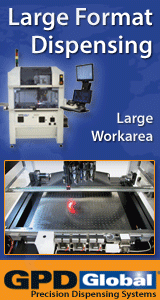Printed Circuit Board Assembly & PCB Design Forum
SMT electronics assembly manufacturing forum.
- SMTnet
- »
- Electronics Forum
- »
- polyimide stencils
polyimide stencils
![]()
![]() I keep hearing about polyimide stencils, but what are they...
- Nov 12, 1998
by
I keep hearing about polyimide stencils, but what are they...
- Nov 12, 1998
by
![]()
![]() | I keep hearing about polyimide stencils, but what are th...
- Nov 12, 1998
by
| I keep hearing about polyimide stencils, but what are th...
- Nov 12, 1998
by
![]()
![]() | | I keep hearing about polyimide stencils, but what are ...
- Nov 12, 1998
by
| | I keep hearing about polyimide stencils, but what are ...
- Nov 12, 1998
by
![]()
![]() | | | I keep hearing about polyimide stencils, but what ar...
- Nov 13, 1998
by
| | | I keep hearing about polyimide stencils, but what ar...
- Nov 13, 1998
by
![]()
![]() | | | | I keep hearing about polyimide stencils, but what ...
- Nov 13, 1998
by
| | | | I keep hearing about polyimide stencils, but what ...
- Nov 13, 1998
by
![]()
![]() | I keep hearing about polyimide stencils, but what are th...
- Nov 14, 1998
by
| I keep hearing about polyimide stencils, but what are th...
- Nov 14, 1998
by
![]()
![]() | | | | | I keep hearing about polyimide stencils, but wha...
- Nov 16, 1998
by
| | | | | I keep hearing about polyimide stencils, but wha...
- Nov 16, 1998
by
![]()
![]() | | | | | | I keep hearing about polyimide stencils, but w...
- Nov 18, 1998
by
| | | | | | I keep hearing about polyimide stencils, but w...
- Nov 18, 1998
by
![]()
![]() | | I keep hearing about polyimide stencils, but what are ...
- Apr 22, 1999
by
| | I keep hearing about polyimide stencils, but what are ...
- Apr 22, 1999
by
- SMTnet
- »
- Electronics Forum
- »
- polyimide stencils







